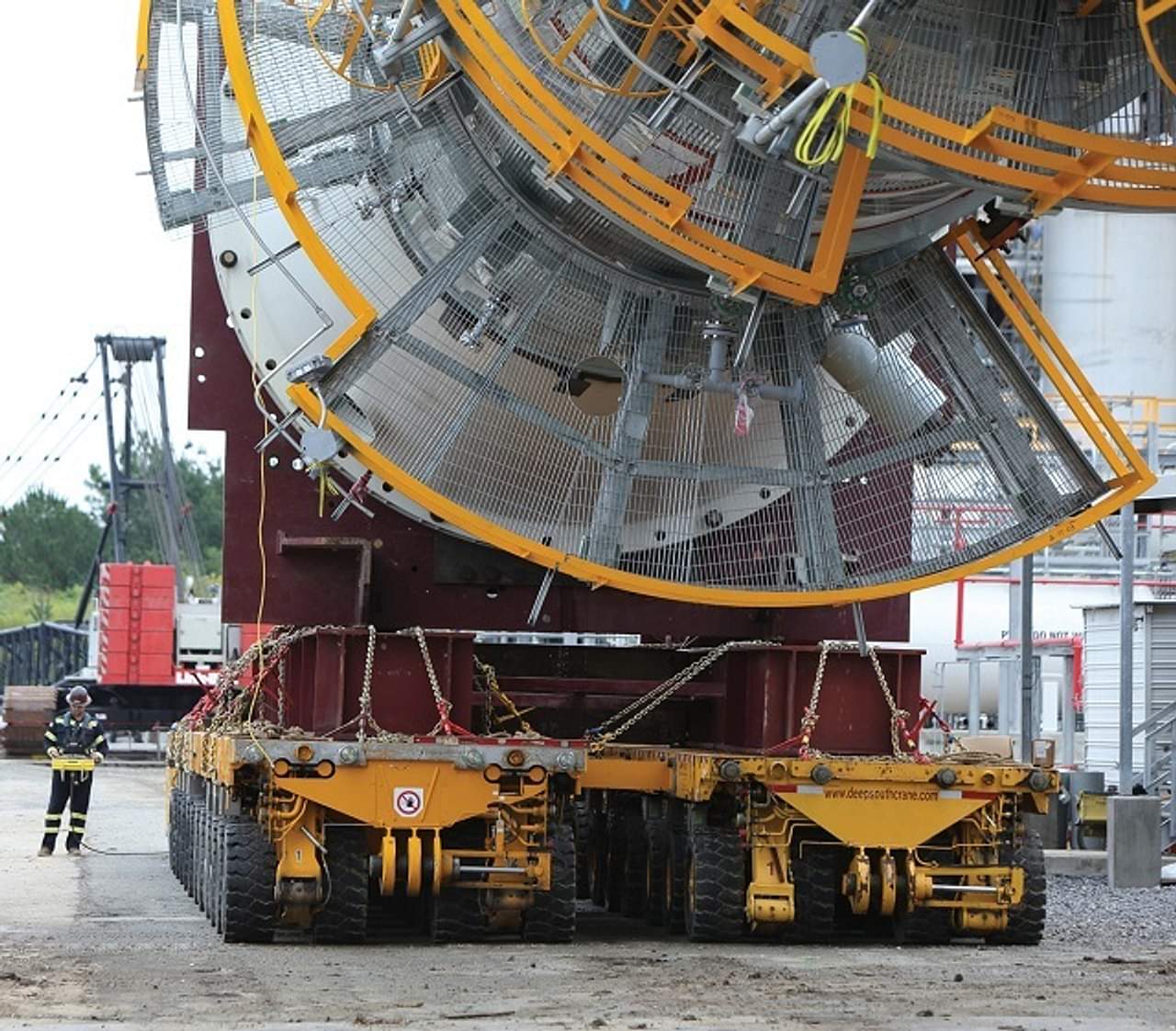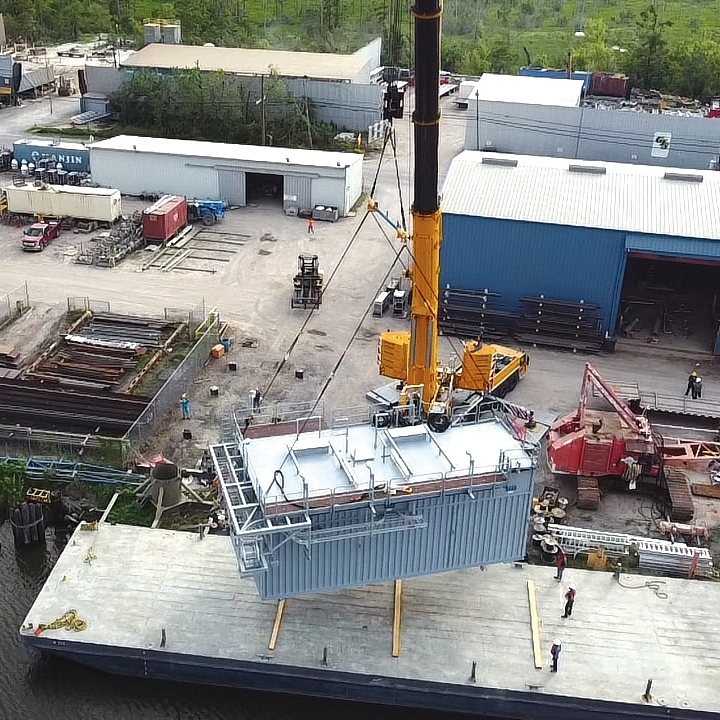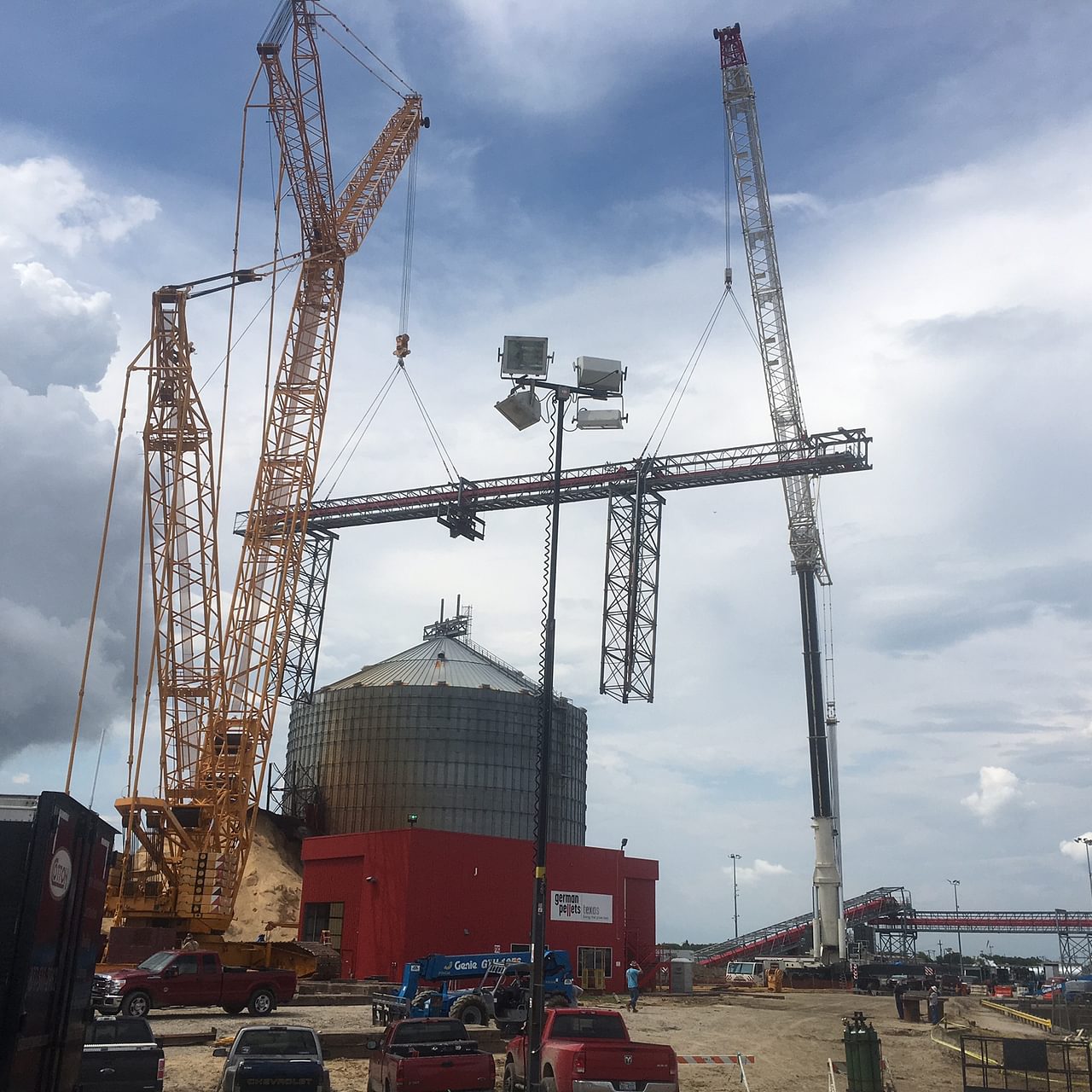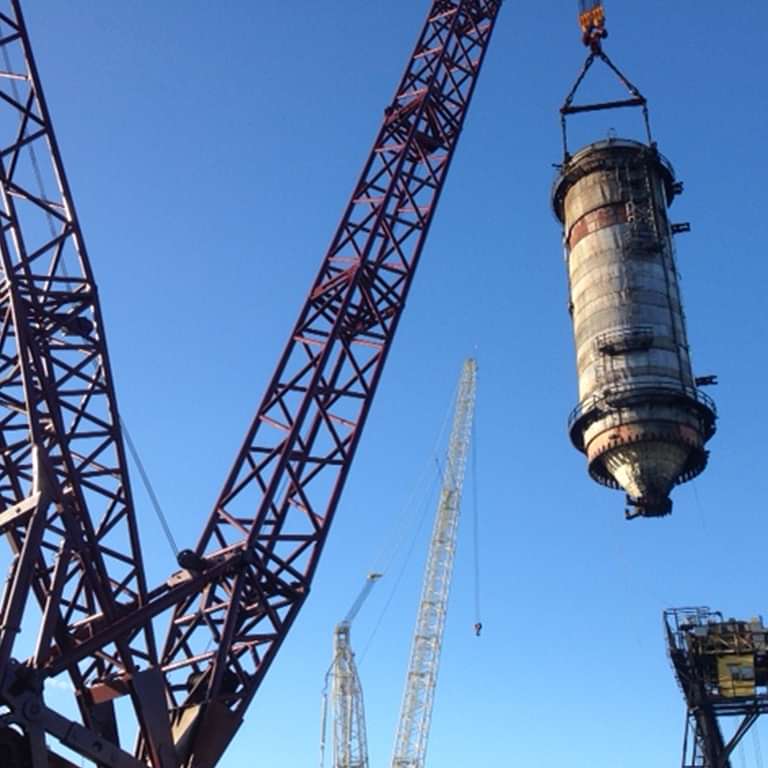Managing Confined and Congested Work Areas With Expertise
-
Equipment Used
-
Services Used
-
By the Numbers
- Prefrac Tower: 600 tons, 211' tall, 15' wide
- Caustic Tower: 325 tons, 210' tall, 10' wide

Infrastructure limitations are nothing new in the industrial landscape. As refineries and other sites continue to expand and restructure, these constraints will only increase. The ideal advantage is to be able to adapt, operate, and perform within these tight quarters. If you are planning a turnkey, turnaround, or infrastructure upgrade, but are concerned about additional operation stoppages due to space confinements, Deep South Crane and Rigging has the experience, equipment and expertise to meet your goals and handle the challenges of confined and congested work areas.
Deep South Crane and Rigging was recently contracted by a southeast petrochemical plant as part of a major pre-turnaround project. In order to de-bottleneck ethylene production, Deep South erected a caustic tower and a prefrac tower. With dozens of different contractors and over 700 workers, a confined and congested work area posed the greatest challenge. Each contractor had a specific timetable to maintain, bringing in equipment could not create delays in these schedules. To reduce the footprint needed to execute these lifts, Deep South brought in its proprietary 1500-ton VersaCrane TC-24000 along with a 500-ton tailing frame.
The prefrac tower weighed in at 600 tons and was 211’ tall and 15’ wide. The caustic tower weighed 325 tons and was 210’ tall and 10’ wide. To lift and maneuver the caustic tower the VersaCrane TC-24000 was used along with the CC-1800 Demag as the tail crane. The prefrac tower was also moved with the VersaCrane TC-24000, along with a 24-axle line DW Scheuerle SPMT equipped with a 500-ton tailing frame.
The versatile design of Deep South’s proprietary 1500-ton VersaCrane TC-24000 created multiple money-saving solutions for the client. The special configuration and rigging used prevented the need to bring in a second smaller crane. Utilizing a secondary crane would have forced other projects to stop due to space limitations, increasing costs across the board. The custom manufactured lifting bails and links of the crane’s outrigger design also allowed for the non-sterilization of multiple site equipment foundations, as well as minimal site prep to accommodate the crane.
Even with tremendous congestion and space constraints, Deep South Crane and Rigging successfully completed the installation of both towers. With the expertise and experience of working parallel with other contractors, along with the ability to customize rigging, this project was finished without incident, on time, and saved the client money.


Related Projects

Maneuvering in Tight Spaces
View Project
Maneuvering in Tight Spaces
A seemingly routine lift and set of a pump house from the dock onto a barge came to a halt when a client’s crane failed—significantly impacting a task with a tight delivery window.

A One Lift Truss and Tower Take-Down
View Project
A One Lift Truss and Tower Take-Down
In the Southwest, a 100' diameter wood pellet bin caught fire and collapsed, compromising the 117,000-pound, 215’ long truss and tower conveyor system.

420T Vessel VersaCrane™ Lift
View Project
420T Vessel VersaCrane™ Lift
Using our powerful 2,500-ton VersaCrane TC-36000 with 450’ main boom and a 260’ radius, Deep South successfully removed and replaced these vessels, the largest of which was 420 tons.